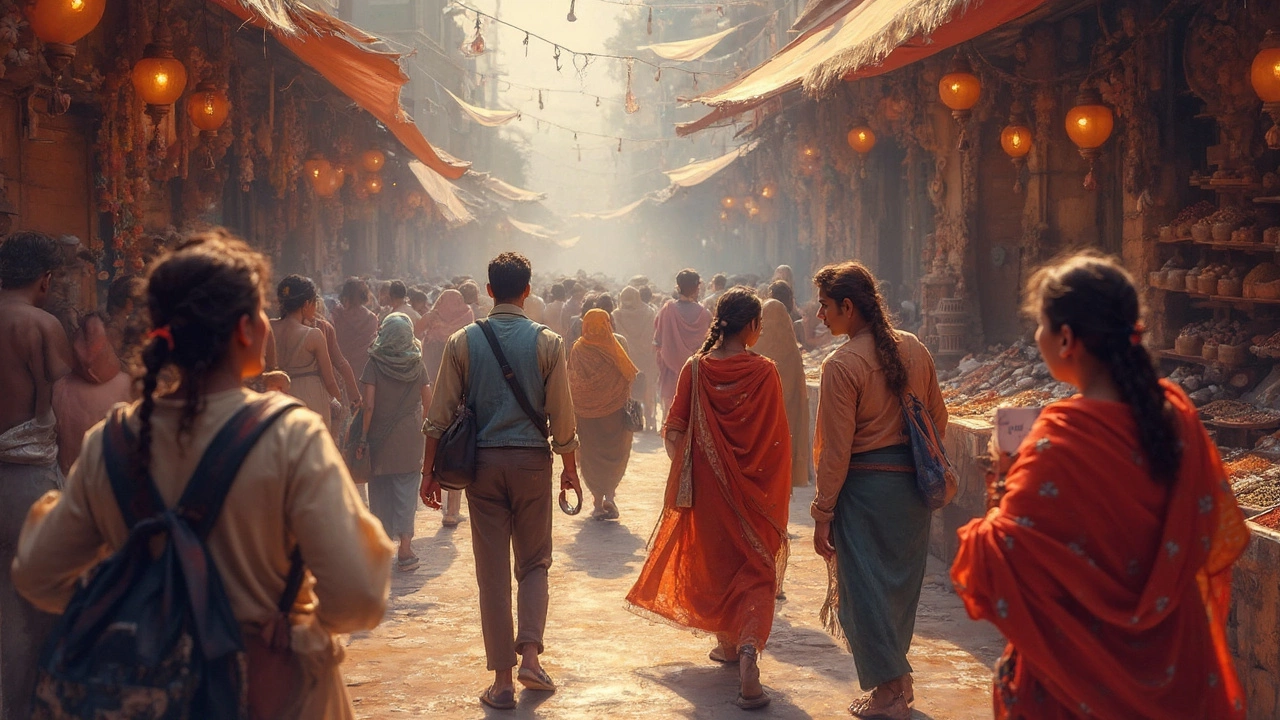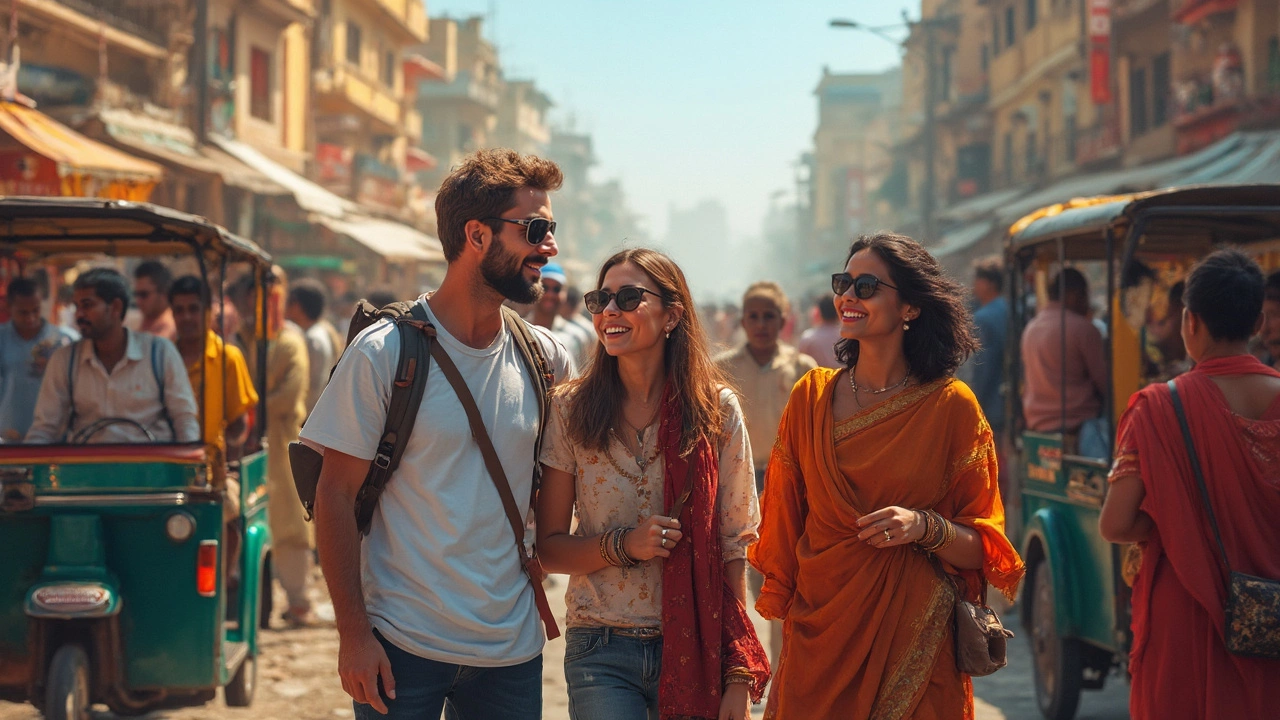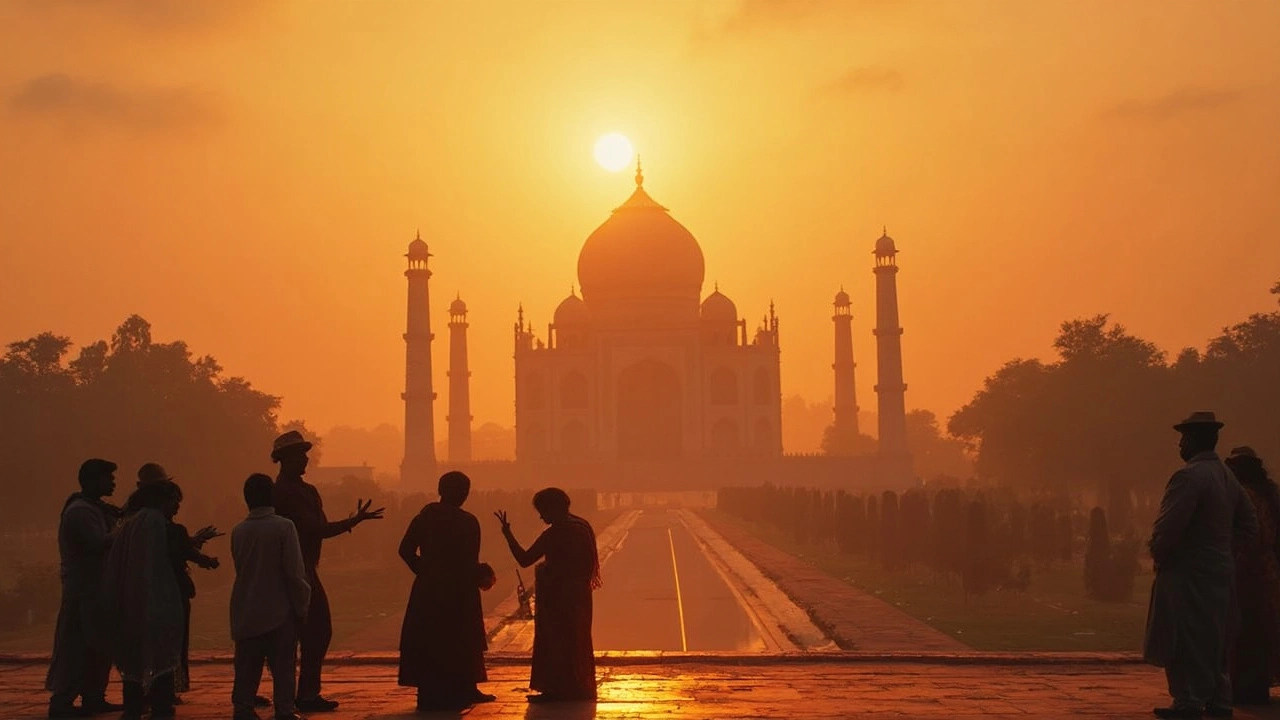Is India a Friendly Country to the US?
 Apr, 12 2025
Apr, 12 2025
India's connection with the United States has layers, stretching back through history and into our modern lives. You've probably heard stories of iconic cultural swaps, be it yoga in American living rooms or Hollywood's fascination with Bollywood flair. But what about when you set foot in the colorful, chaotic world of India on a shoestring budget, wanting to feel welcomed?
First off, let's chat about affordability. If you're picky about your pennies, India might just be your playground. Expect flavorful local cuisine that'll satisfy your taste buds without burning a hole in your pocket. And when it comes to places to crash, India offers everything from budget hostels to cozy homestays.
But beyond the dollars, are you wondering how friendly you’ll find it traveling there as an American? Well, here's a peek into the heart of India. Many locals greet foreigners with genuine curiosity and warmth, curious about your stories as you explore theirs. Of course, knowing some basics of local norms and showing respect goes a long way in any culture.
- Historical Context and Modern Relationship
- Cultural Connections and Exchange
- What Makes India Budget-Friendly
- Tips for American Travelers
- Embracing Local Norms and Traditions
Historical Context and Modern Relationship
The bond between India and the US is a mix of past twists and present-day stories. Remember when there was that buzz about the Cold War? During that time, the two countries often found themselves in different pockets due to differing alliances. But things have changed since then, big time.
Fast forward to the 21st century, and you’ll spot a significant shift. Cooperation blossomed especially in tech, trade, and even education. The major breakthrough came with the signing of the India-US Civil Nuclear Agreement in 2008, a milestone that symbolized a close strategic partnership. To put it simply, both nations realized they could achieve more by teaming up rather than apart.
In more recent times, think about the cross-cultural connections beyond politics. Entrepreneurs from both are doing business, students are swapping countries for study programs, and folks are mixing traditions, tech, and even food (hello, curry pizza!). These cultural ties are the magical bonding agent keeping the US and India cruising on a friendly track.
The present governments play nice too. Visits, summits, and trade talks are regular, highlighting interests in shared security goals and economic growth. Today, with the growing influence of global dynamics and mutual benefits at stake, this relationship continues to evolve, making India quite the ally for budget-conscious American travelers looking to explore a friendly and welcoming nation.
Cultural Connections and Exchange
Let's talk culture, one of the richest veins in the India-US relationship. Over the years, these two countries have become great at swapping ideas and styles like they’re trading cards. You’ve got yoga, which found its way from Indian ashrams to yoga studios everywhere in America. Likewise, Hollywood isn’t shy about borrowing from Bollywood’s vibrant storytelling.
Indian cuisine is another gift that keeps on giving. Anyone in the US with a craving for curry or naan knows the influence is both delicious and hard to miss. Indian restaurants dot American cities, introducing people to flavors as diverse as the country's culture.
In the arts, there’s been a cross-pollination that can’t be ignored. Indian traditional music and dance, with their intricate rhythms and movements, have inspired American artists to incorporate these elements into their performances, creating fusion masterpieces.
Education, too, at times becomes an exchange program. Thousands of students head each way across the ocean to learn, share ideas, and contribute to a global understanding.
Here’s a quick snapshot of the cultural impact:
| Aspect | Details |
|---|---|
| Food | Indian restaurants and Indian-inspired dishes in mainstream American cuisine |
| Education | Exchange programs with top universities in both countries |
| Film & Arts | Bollywood-inspired themes and songs in Hollywood, and vice versa |
These cultural connections make India not just a friendly place but also a fascinating one for anyone intrigued by cross-cultural exchanges. Whether you’re binging on samosas or watching a colorful dance festival, the cultural ties give plenty of reasons to explore and appreciate both worlds.

What Makes India Budget-Friendly
If you're looking to explore without parting with a whole lot of cash, India could be your perfect playground. Let’s break down why it doesn't cost a fortune to soak in its rich history and vibrant culture.
First up, transport. From rickety rickshaws to comfy trains, travel won’t drain your wallet. Train travel, especially, is a classic way to see the country without spending much. Grab a sleeper ticket on the vast network and watch the kaleidoscope of landscapes roll by, all for a fraction of what you'd pay elsewhere.
When it comes to places to stay, India’s got you covered. There’s a range of options from budget guesthouses to humble homestays that offer an authentic peek into local life. Pitching in a few extra bucks for a room with a fan can make a world of difference in the summer months.
Now, let’s talk about food, glorious food. Street eats in India are not just affordable—they’re downright delicious. Savoring spicy street food like samosas, dosas, and a burst of chunky chaat will fill you up without putting a dent in your travel budget.
If you’re into shopping, those vibrant bazaars are bursting with colorful textiles and intricate crafts. Haggling is often part of the experience and can be a lot of fun if done with a smile. Aim to find unique souvenirs without splurging.
Need more than just anecdotes? Check out this quick table of average prices to get the lay of the land:
| Item | Approximate Cost (USD) |
|---|---|
| Street Food Meal | $1-2 |
| Budget Guesthouse Stay (per night) | $10-20 |
| Local Train Ticket | $0.50-5 |
With these pocket-friendly choices, you can see why India is a budget-friendly haven for travelers from the US and beyond. By choosing wisely, you'll stretch those dollars to new adventures and unforgettable experiences.
Tips for American Travelers
Thinking of jetting off to India without emptying your wallet? Here are some practical tips to keep your trip smooth, affordable, and immersive. Whether you're a first-timer or a seasoned traveler, these handy pointers will make your stay in India both budget-friendly and culturally enriching!
First things first—accommodations can make or break your budget. India is perfect for budget travel. You’ll find an array of hostels and guesthouses that keep things cozy and light on your finances. Websites like Hostelworld or Airbnb are great for booking before you land.
When it comes to getting around, Indian public transportation is a goldmine for the economical traveler. Trains are a classic choice, but don't forget about local buses and the colorful, chaotic rickshaws that buzz around cities. For a taste of nostalgia, famous train rides like the Darjeeling Himalayan Railway offer an unforgettable experience without hefty costs.
Eating on a budget? You'll be spoiled with options. From street food stalls to local dhabas (small roadside restaurants), it's all about savory snacks like samosas or chai on the go. Remember, if you're eating at a stall, look for places that are bustling with locals—this usually means it’s tried and true.
Currency exchange is another thing to tick off your list. Know that Indian Rupees is the local currency, and rates can vary a bit. ATMs are pretty widespread, even in smaller towns, so there's no need to stuff those dollars in your socks.
For personal safety and comfort, download apps like Ola or Uber when you need a ride, as they'll give you fare transparency and a layer of security. Friendly countries have thoughtful locals who often speak English. Still, learning a few phrases in Hindi—or other regional languages—can draw smiles and open up more conversations.
- “Hello” - Namaste
- “Thank you” - Dhanyavad
- “Yes” - Haan
- “No” - Nahi
Lastly, don’t forget that haggling is part of the game in markets. It’s not only expected but can also be a fun way to connect with vendors. Just keep it light-hearted!
Traveling to India doesn’t mean compromising on experiences, even on a modest budget. Following these tips, you'll find that the warmth and hospitality in every corner make India a country where you'll likely never feel like a stranger.

Embracing Local Norms and Traditions
When you're exploring a new country, knowing the local customs can really make your experience richer. In India, there are many simple yet profound traditions that can help you fit right in and feel more connected.
Indians are known for their hospitality, or 'Atithi Devo Bhava,' which means 'The guest is God.' This mindset can lead to some incredibly warm welcomes. But how can you reciprocate? Start by keeping a few things in mind:
- Footwear Etiquette: Before entering homes or certain places like temples and mosques, it's customary to remove your shoes. It’s a sign of respect and helps keep spaces clean.
- Dress Code: While India is diverse in its fashion, modesty is often appreciated, especially in smaller towns and religious sites. Dressing conservatively can help you avoid unwanted attention.
- Right Hand Rule: Use your right hand for eating, giving, or receiving. The left hand is typically reserved for personal hygiene, so using the right can show awareness of local etiquette.
- Namaste: A common greeting in India is 'Namaste,' usually performed with palms pressed together. It's respectful and can break the ice in most social situations.
Small gestures, like saying 'Dhanyavaad' for thank you, can go a long way in showing respect. Exploring cultural connections and exchange doesn’t just mean knowing about festivals like Diwali or Holi either. Dive into the local music, food, and even cinema. You’ll find a tapestry of traditions that are both inviting and unique.
Also, striking up conversations with locals in budget travel places like hostels or community events can offer insights you wouldn’t get elsewhere. Engage without assumptions, and you'll be surprised at the stories and knowledge shared in return.